When it comes to participating in activities that carry certain risks, understanding a liability waiver is crucial. A liability waiver acknowledgment letter serves to clarify that you are aware of these risks and agree to hold the organizer harmless. It's a simple yet important document that ensures everyone is on the same page about responsibilities and safety. If you're curious about how to craft your own liability waiver acknowledgment letter, read on for a helpful template!

Legal Terms and Conditions
When participating in adventure sports, individuals must sign a liability waiver acknowledgment to understand the legal terms and conditions associated with these activities. This document outlines the inherent risks involved, such as physical injuries or property damage, occurring in locations like mountain biking trails or rock climbing sites. Participants must recognize that personal responsibility involves understanding the potential dangers, including falls, collisions, or equipment malfunctions. Legal clauses within the waiver often specify the jurisdiction, typically within the state laws of California or Texas, highlighting the designated court for any disputes. Additionally, individuals must acknowledge that signing this waiver limits their right to pursue legal claims against organizers, ensuring participants are fully aware of their liability and consent before engaging in high-risk activities.
Scope of Activities Covered
Participation in outdoor adventure sports, such as rock climbing (typically involving heights exceeding 30 feet), kayaking (in waters with current speeds of 3 knots or more), and mountain biking (on trails with technical features), requires an understanding of inherent risks associated with such activities. Risks include, but are not limited to, equipment failure (with potential injuries requiring medical attention), personal injury due to falls or collisions, and environmental hazards (like weather changes or wildlife encounters). By acknowledging this waiver, participants accept responsibility for their own safety and agree to follow all safety regulations and guidelines established by the organizing body, ensuring a safer experience in activities undertaken during scheduled events and training sessions.
Assumption of Risk Statement
Liability waivers protect organizations and individuals from legal claims by participants who acknowledge the risks involved in activities. An Assumption of Risk statement highlights potential hazards associated with events, such as outdoor sports or recreational activities. Participants should understand the nature of risks, which may include physical injury, property damage, or other unforeseen incidents. Details regarding specific activities, location (for example, a hiking trail in the Rocky Mountains), and the inherent dangers (such as uneven terrain or wildlife encounters) should be clearly outlined. By signing the waiver, individuals accept these risks, thereby relinquishing their right to hold the organization responsible for any injuries or damages incurred during participation.
Indemnification Clause
Participants in physical activities, such as extreme sports or recreational events, should be aware of the risks involved, including potential injuries or accidents. An Indemnification Clause serves to protect the organizing entity, such as a sports club or event coordinator, from legal claims resulting from injuries sustained during participation. This clause stipulates that participants agree to indemnify and hold harmless the entity from any claims, damages, or liabilities that may arise due to their own actions or negligence during the activity. Clear acknowledgment of this clause is crucial for participants, ensuring they understand their responsibility for their own safety, especially in events held in locations like mountainous terrains, water-based environments, or during hazardous weather conditions. Effective communication of this information enables a safer environment and reduces the risk of litigation for the organizing party.
Consent and Agreement Signature
Informed consent agreements serve to protect organizations from legal liability, ensuring participants understand the risks involved. A liability waiver acknowledges that participants accept those risks voluntarily. Effective waivers often include specific language regarding activities, potential hazards, and personal responsibility. Participants typically sign this document to indicate their understanding and acceptance of the outlined terms. Properly drafted waivers can significantly reduce the likelihood of lawsuits related to injuries or accidents occurring during the activity. Clear explanations regarding the scope of the waiver, such as duration, specific locations, or events, foster greater transparency and ensure individuals make informed decisions before engagement.
Letter Template For Liability Waiver Acknowledgment Samples
Letter template of liability waiver confirmation for event participation
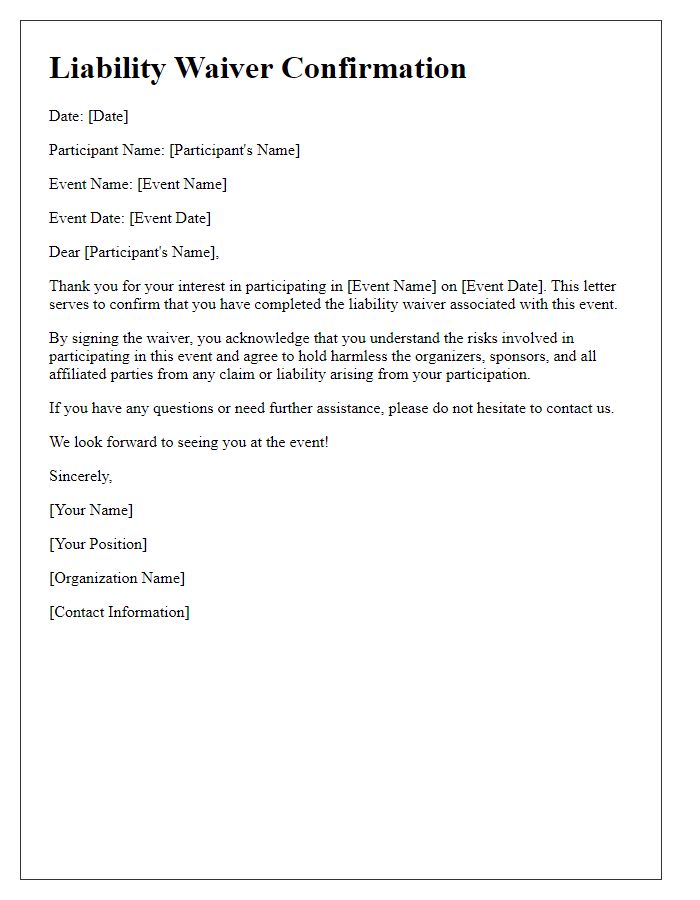
Letter template of liability waiver recognition for recreational programs
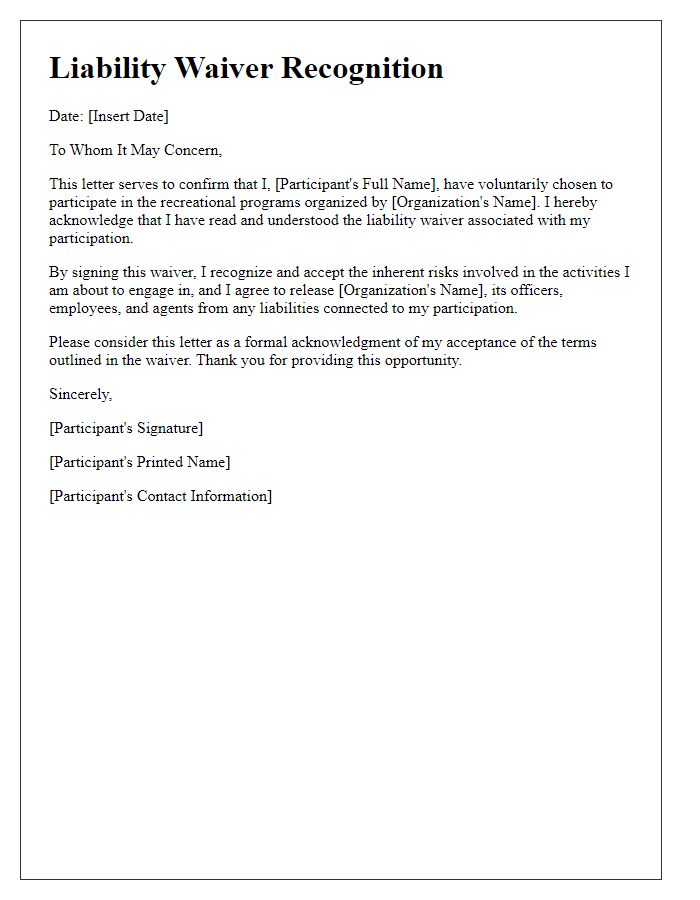

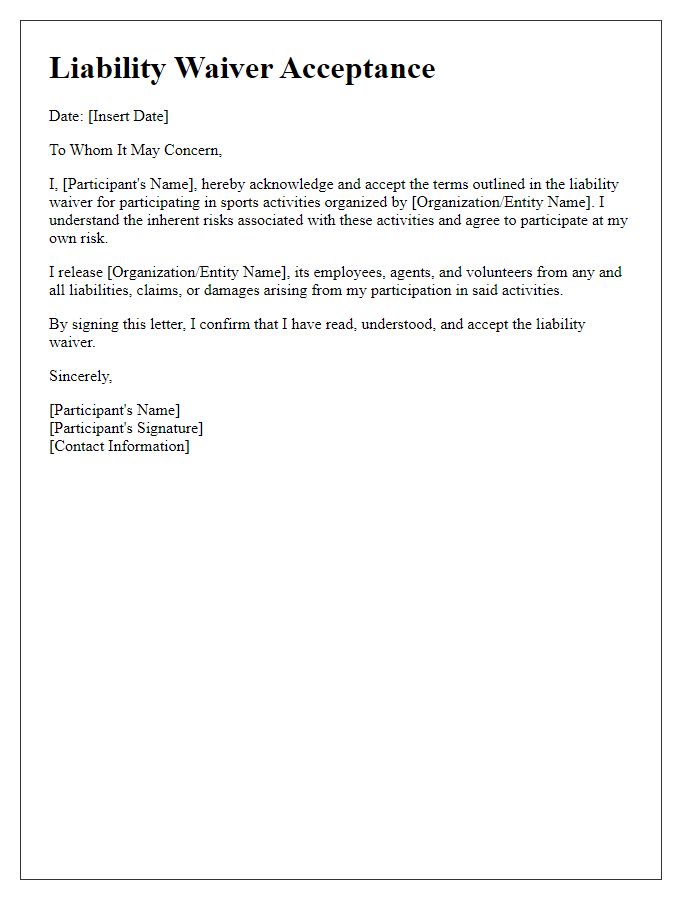
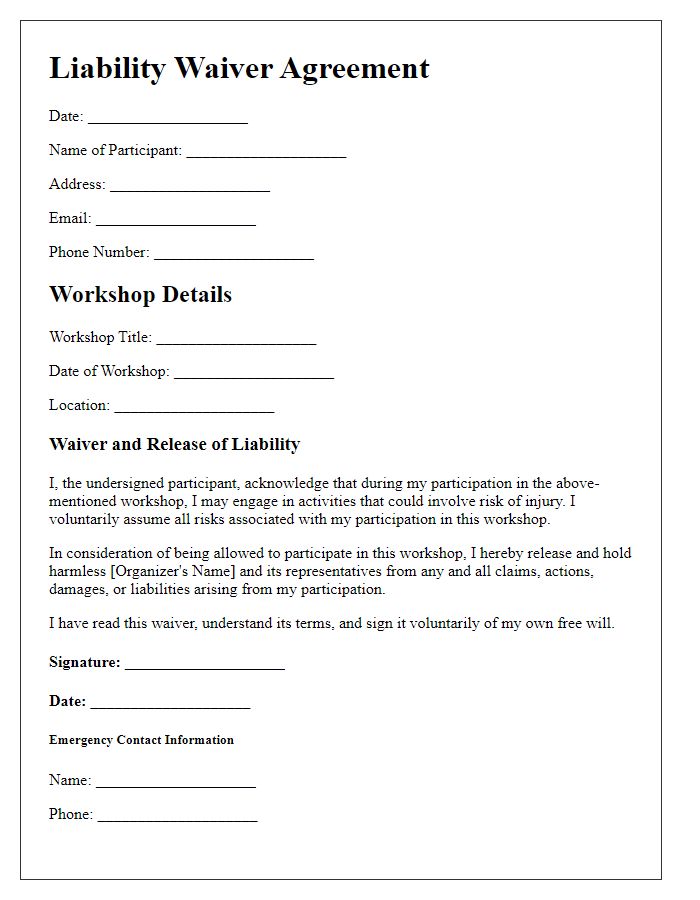
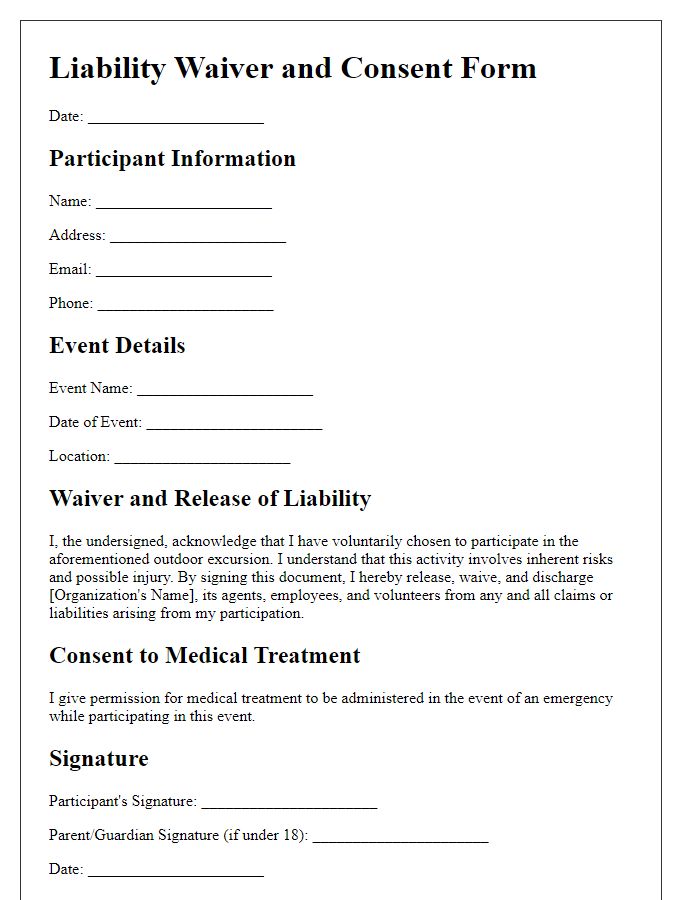
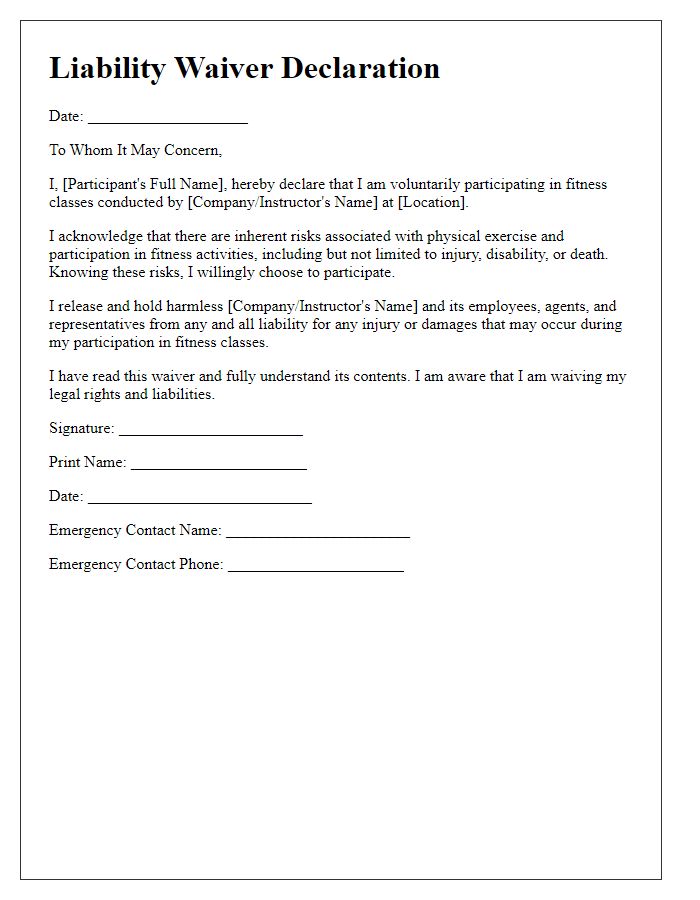
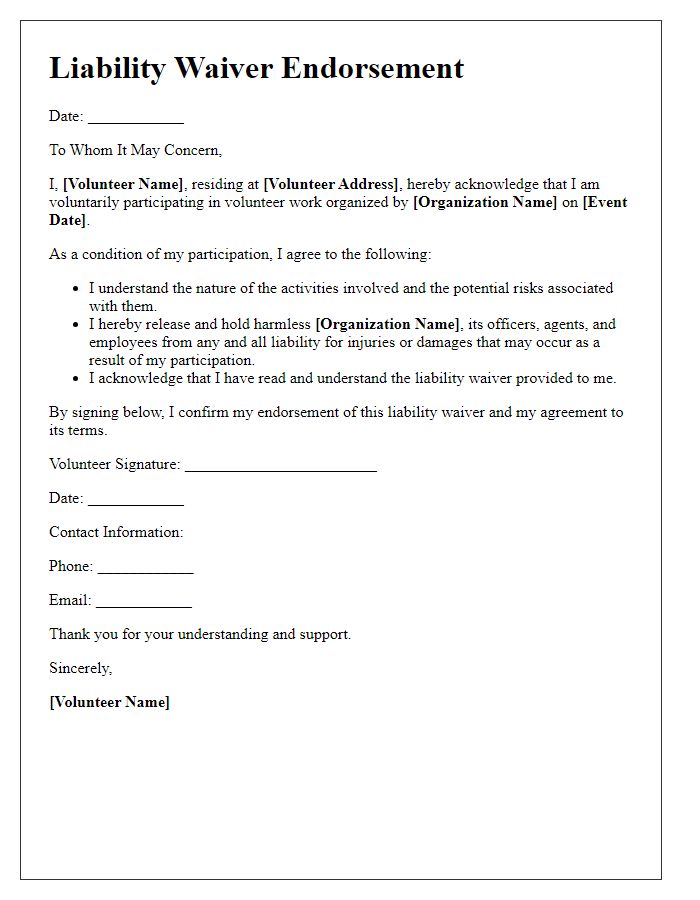
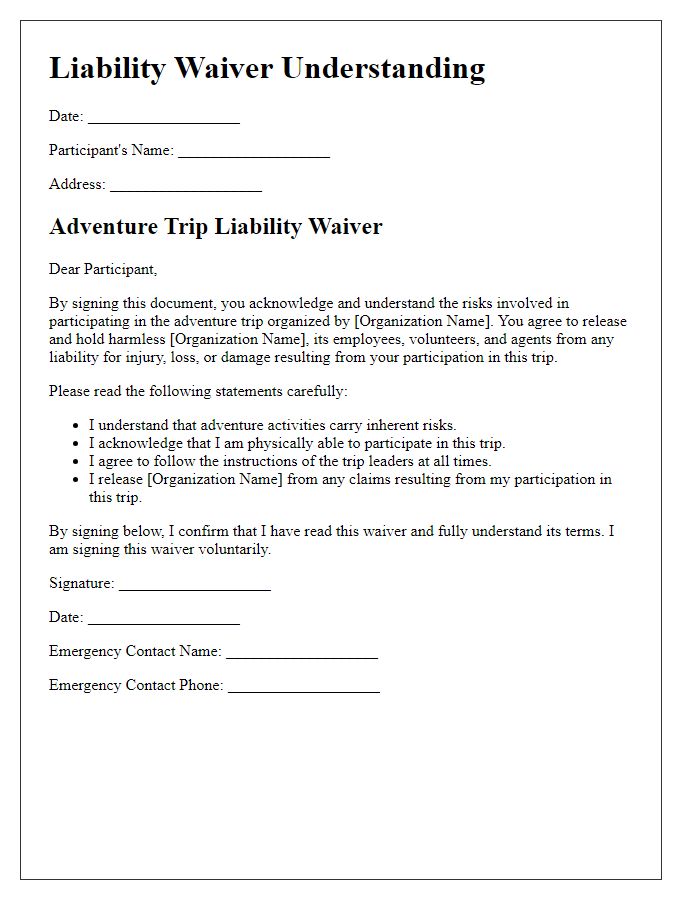
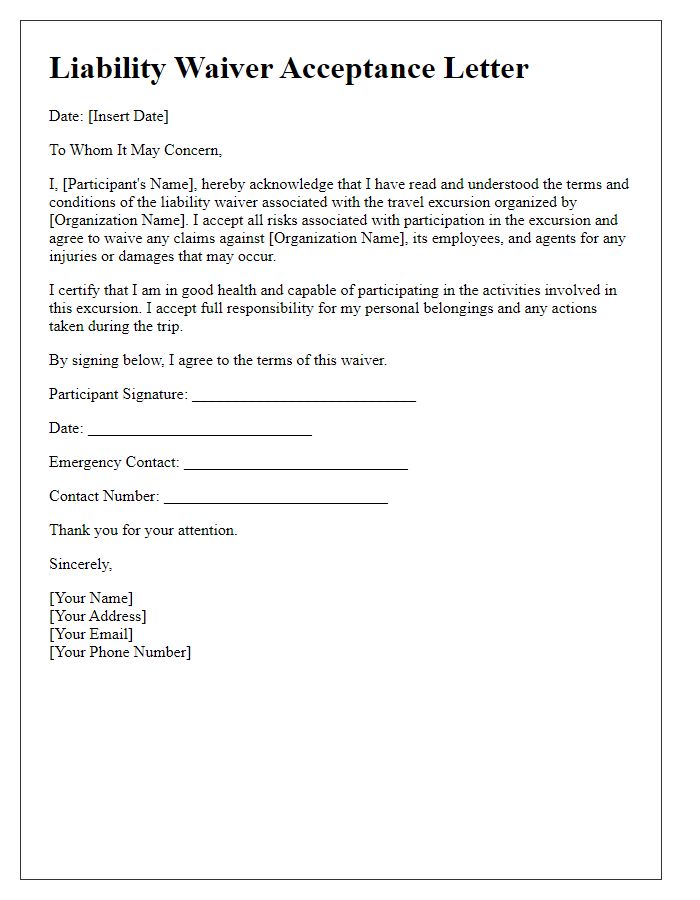
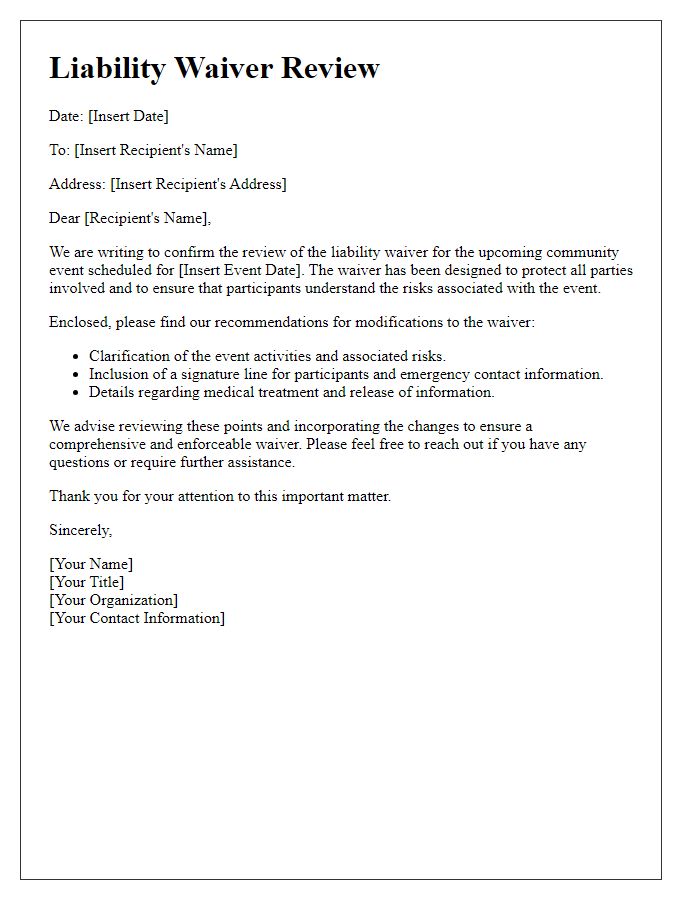


Comments